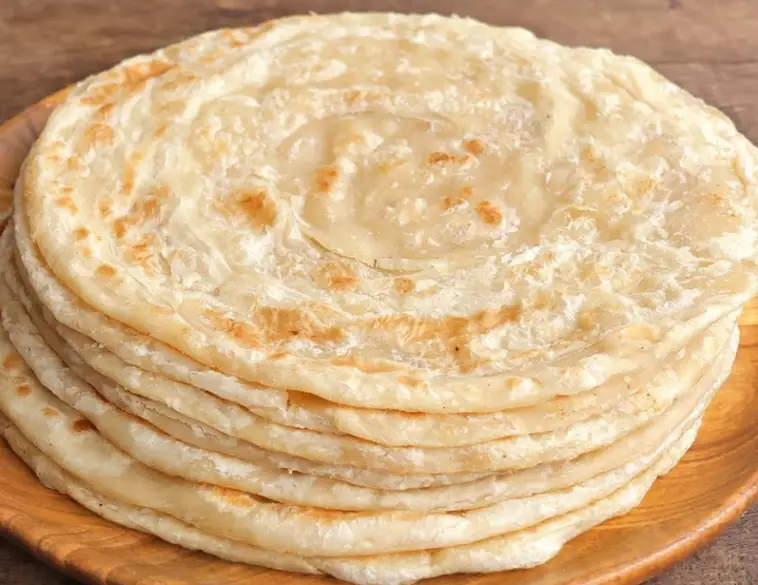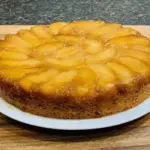A Culinary Odyssey: Crafting Turkish Bread, A Poetic Dance of Flavors and Tradition
In the alchemy of kitchens, where flour and water transform into golden symphonies, we embark on a culinary odyssey—a celebration of Turkish Bread. This is not just a recipe; it’s a poetic narrative, a dance of flavors that takes us to the heart of Turkish kitchens, where the scent of freshly baked bread is a love letter to tradition. Join me as we traverse the emotional tones and poetic dance of ingredients, creating a bread that resonates with the soulful warmth of heritage and the joy of breaking bread together.
Ingredients:
- 4 cups all-purpose flour, the foundation of our culinary journey
- 1 tablespoon sugar, the sweet whisper that activates the yeast
- 1 tablespoon active dry yeast, the magical spores that awaken the dough
- 1.5 cups warm water (about 110°F/43°C), the nurturing embrace for our ingredients
- 1 teaspoon salt, the seasoned guide that elevates the flavor
- 2 tablespoons olive oil, the liquid gold that enriches the dough
- Sesame seeds or nigella seeds for sprinkling, the finishing touch that adds texture
Instructions:
The Yeast Activation Ballet:
- Begin our culinary ballet by activating the yeast. In a small bowl, combine warm water, sugar, and active dry yeast. Allow this mixture to rest for about 5-10 minutes, or until it becomes frothy—a transformation akin to the rising crescendo of a symphony.
The Flour Symphony:
- In a large mixing bowl, create the foundation of our Turkish Bread by sifting the all-purpose flour. This is the poetic stage where the culinary performance will unfold.
- Form a well in the center of the flour mound, a culinary crater ready to receive the yeast elixir.
The Dough Fusion:
- Pour the activated yeast mixture into the well, allowing it to seamlessly merge with the flour. This is the union, the moment when ingredients intertwine in a dance of doughy unity.
- Add salt to the mixture—a seasoned note that will guide the flavor journey. Drizzle olive oil, the liquid gold, over the dough. This is the enrichment, a culinary caress that adds depth and silkiness to the texture.
- Begin kneading the dough, a tactile ballet where your hands become the conductor of the culinary orchestra. Knead for about 10-15 minutes, or until the dough is smooth and elastic. This is not just kneading; it’s a rhythmic meditation, a connection to the heart of the bread.
The Proofing Serenade:
- Place the kneaded dough in a lightly oiled bowl, covering it with a kitchen towel. Let it rest and rise for 1-2 hours or until it doubles in size. This is the serenade, the melody of patience as the dough breathes life into itself.
The Bread Shaping Waltz:
- Once the dough has risen, gently punch it down—a waltz of deflation that prepares it for the final shaping.
- Preheat the oven to 400°F (200°C), the prelude to the grand baking performance.
- Divide the dough into equal portions and shape them into rounds or ovals. This is the shaping waltz, a choreography where each piece becomes a testament to the artisanal craft.
The Baking Ballet:
- Place the shaped dough on a baking sheet lined with parchment paper. Sprinkle sesame seeds or nigella seeds over the top—a poetic garnish that adds texture and visual allure.
- Allow the shaped dough to rest for about 15-20 minutes, a brief intermission before the grand finale.
- Bake in the preheated oven for 15-20 minutes or until the bread achieves a golden brown hue and sounds hollow when tapped. This is the baking ballet, a transformation where raw dough becomes the golden protagonist.
Cook Notes:
As the Turkish Bread bakes in the oven, your kitchen transforms into a sanctuary of anticipation. The aroma, a medley of yeast, warmth, and the promise of golden perfection, fills the air like a tantalizing overture. This is not just baking; it’s a culinary performance, where every rise and every scent tell a story of tradition unfolding.
Variations:
While Turkish Bread is already a culinary masterpiece, consider adding your unique notes to the composition. Experiment with different flour blends—whole wheat for a rustic touch or a mix of flours for a nuanced flavor. Introduce a handful of chopped herbs, such as rosemary or thyme, for a fragrant twist. Let your culinary creativity be the conductor, guiding this symphony toward your desired crescendo of flavors.
Keto Versions:
For those navigating the keto landscape, this traditional Turkish Bread can be adapted to align with your dietary journey. Substitute almond flour or coconut flour for the all-purpose flour, and ensure all other ingredients comply with keto principles. The result will be a low-carb masterpiece that sings with the same Turkish Bread flavor notes.
Low Carb Versions:
For disciples of the low-carb lifestyle, this recipe already stands as a virtuoso. To further align with your dietary preferences, consider reducing the amount of sugar or using a low-carb sweetener. The Turkish Bread symphony will still unfold as a flavorful ode to health-conscious indulgence.
As you break a piece of warm Turkish Bread, witness the golden crust, the soft interior, and the aroma of tradition within. With every bite, savor the symphony of tastes—the earthiness of olive oil, the seasoned guidance of salt, and the comforting warmth of homemade bread. Let this bread be more than a side; let it be a culinary reverie, an emotional journey into the heart of Turkish kitchens. In every bite, find the joy of simple ingredients transforming into a loaf of cultural heritage, a celebration of warmth that brings joy to the table and a connection to the soul.



